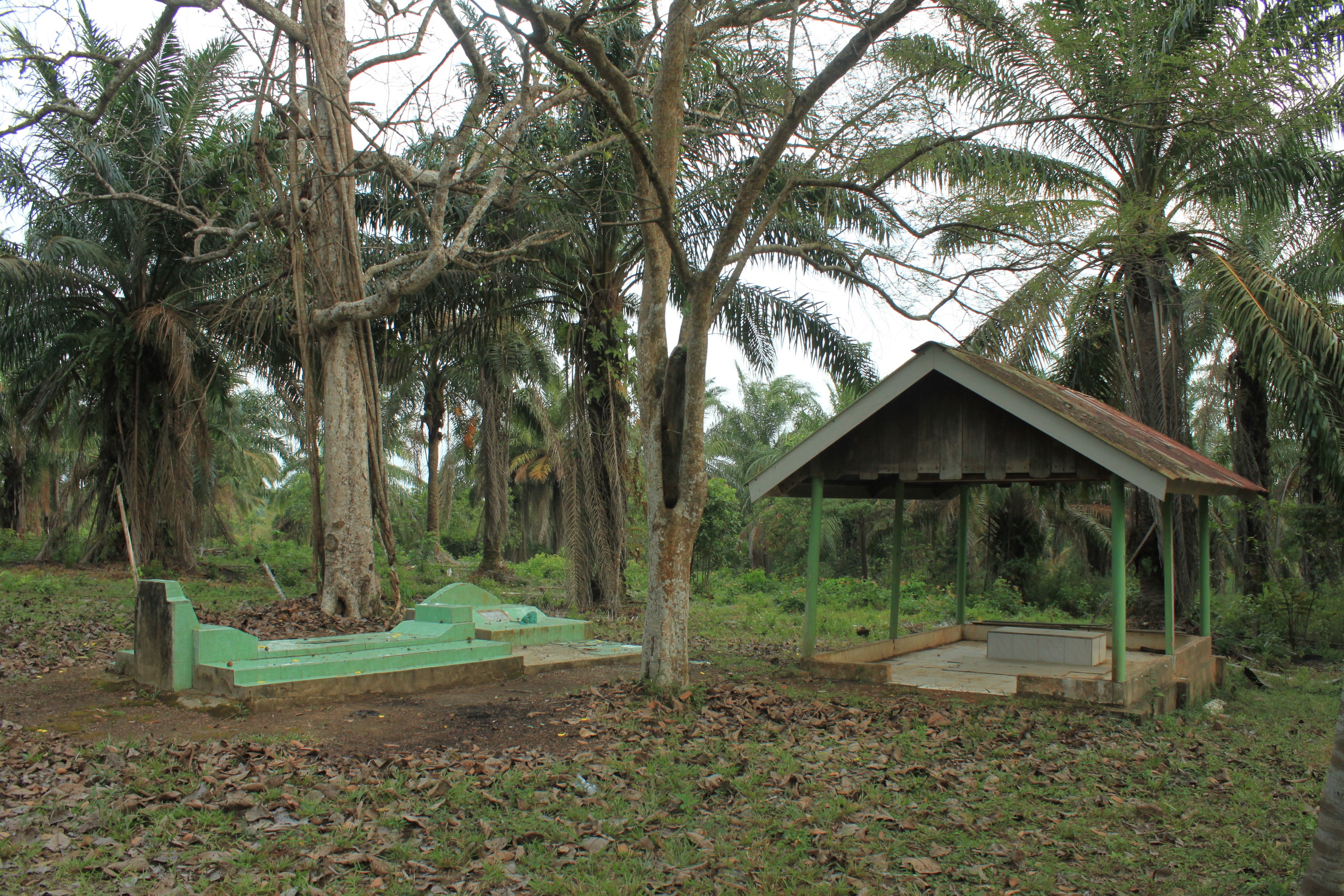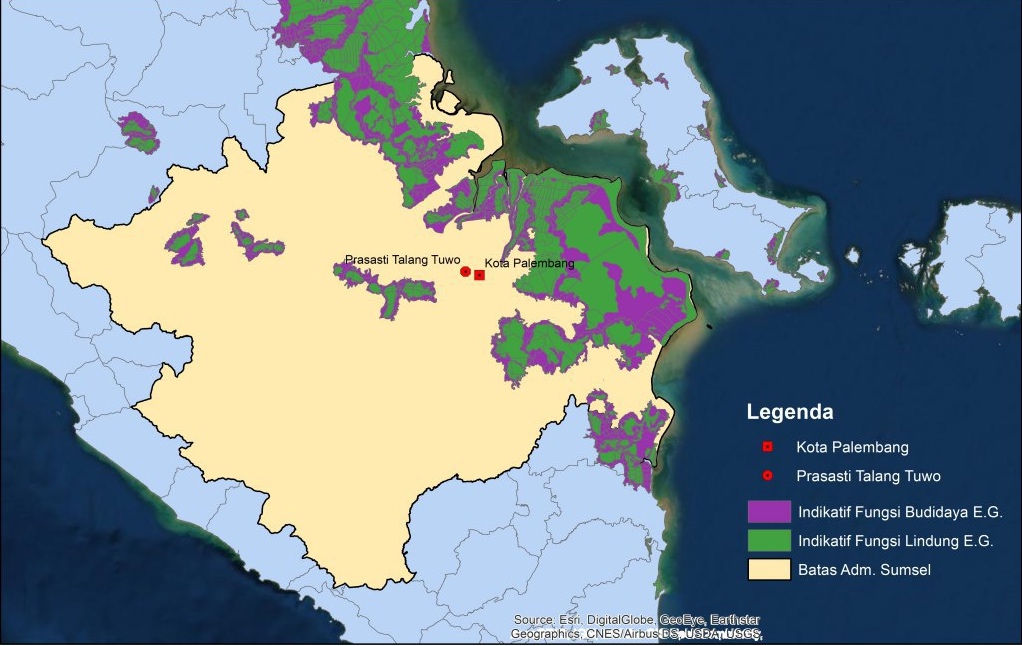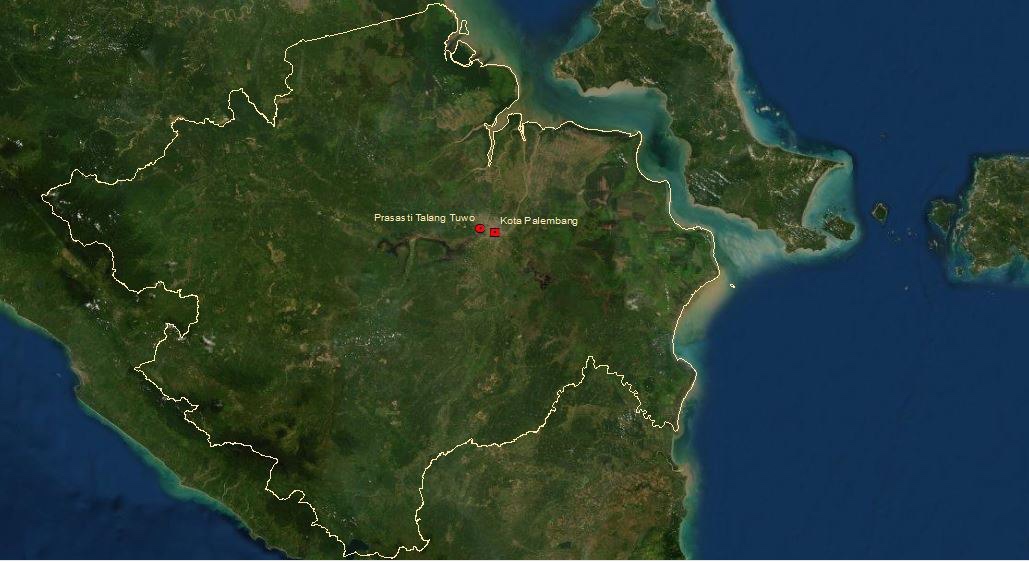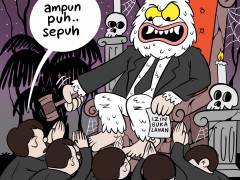The White Monster: Wealth Multiplying Behemoth of the Nation's Conglomerates
By AdminTalang Tuwo Inscription, Local Wisdom Protects Peat Ecosystem (1)
As the sun went down below the horizon, I rode my motorbike along the Soekarno-Hatta Bypass—Alang-alang Lebar Terminal main road. My destination was Talang Kelapa Ujung Hamlet, Talang Kelapa Village, Alang-alang Lebar Subdistrict, Palembang City, where the relic of Srivijaya Kingdom, Talang Tuwo inscription, was located. This village was only about 18 km away from Palembang, the capital of South Sumatra Province.
From the bypass, the road extended approximately 4 km. Not all of them were paved and concrete roads, some were still red dirt roads. Fortunately, it was the dry season, so I did not face any significant problems when riding my motorcycle and passing through some of these dirt roads. If it were the rainy season, my motorcycle tires would be full of mud, slippery, and stuck in puddles.
After riding for about 10 minutes from the main road, I arrived at the three-way junction of PT. Adhya Tirta Sriwijaya which was located at Talang Kelapa Public Housing, Palembang. I knew Nang Adi, a long-time resident of this area, who knew the exact location of the Talang Tuwo inscription. I stopped by his house and he was willing to give me directions. He deftly took a piece of paper and drew a map.
To be honest, I was a bit confused by Nang Adi's map because I wasn't used to reading maps. However, with some hints from him, I got on my motorbike and parted ways with him to continue the journey.
"After the Revari complex, keep going along the dirt road until you see the four-way intersection," said Nang Adi.
“Then turn left into an oil palm plantation. Just go straight until you see the grave and hut," he added.
I tried to remember and follow his directions while wishing that I brought a GPS-enabled device. After leaving the crossroads, I was fortunate to meet a local resident who gave me further directions.
Without any significant obstacles, I was finally able to find the location where the Talang Tuwo inscription was found, which is currently better known as a sacred cemetery. Upon arrival, my eyes immediately fell on two tombs with different tombstone position from the usual norm in cemeteries. In Islamic cemeteries, the tombstones usually face the west. But here, one of the tombstones faces north.
I was increasingly convinced that this was the location where the Srivijaya Kingdom inscription was found after seeing the inscription on one of the tombstones. It says Hyang Talang Tuwo, Saka Year 606 (684 AD). On the larger tomb with the north-facing tombstone, the inscription reads Dewo Bernua, Saka Year 606 (684 AD). A few steps from the tomb, there was an open hut with a rusted tin roof.
I was a little taken aback by this sight. From the information I got from Retno Purwanti, a researcher at the Archaeological Center of South Sumatra, the Talang Tuwo inscription was first discovered in 1920 on a pile of stones on a hilly mound. The inscription was a slab found in a hole next to a rickety hut.
The inscription stone slab is no longer there but has been stored at the National Museum in Jakarta. The rickety hut had turned into an open hut with a tin roof and white tile floor. In the middle of the 2mx3m hut, there is a low stand which is believed to be where the inscription was found.
The surrounding area has also changed completely. The location of the inscription, which is now known as a sacred cemetery, is surrounded by settlements and oil palm plantations. Not far from the cemetery, there are several basins filled with water and typical swamp plants. In the past, the area was known to be quite green like the wilderness.
At an intersection about 500 meters before the cemetery, I met a man sitting on his motorbike. After exchanging greetings and getting to know each other, he introduced himself as Darwinsyah, a 45-year-old resident of Talang Kelapa Ujung who had lived there since his childhood. Darwin, as he is usually called, said that in the past he still had the chance to feel the natural beauty of Talang Kelapa. In the early 1980s, the hamlet was still surrounded by forests, coconut groves, sugar palm plantations, and bamboo groves. During their free time, he and his friends used to fish in swamps and small flowing rivers.
But now it is increasingly difficult to find this scenery because the swamps were filled up for various purposes such as settlements and oil palm plantations. "Now we have to go out of town if we want to fish," said Darwin.
(To be continued in part 2)








